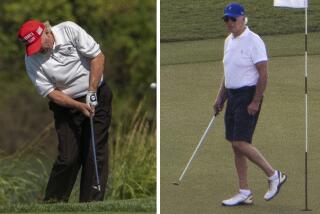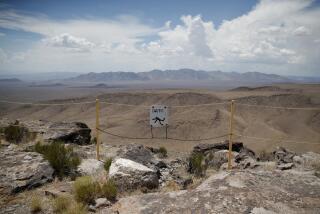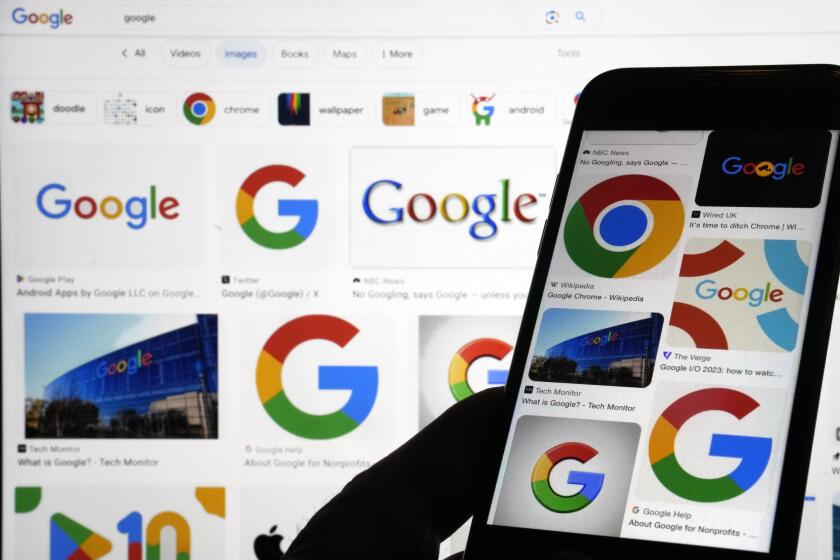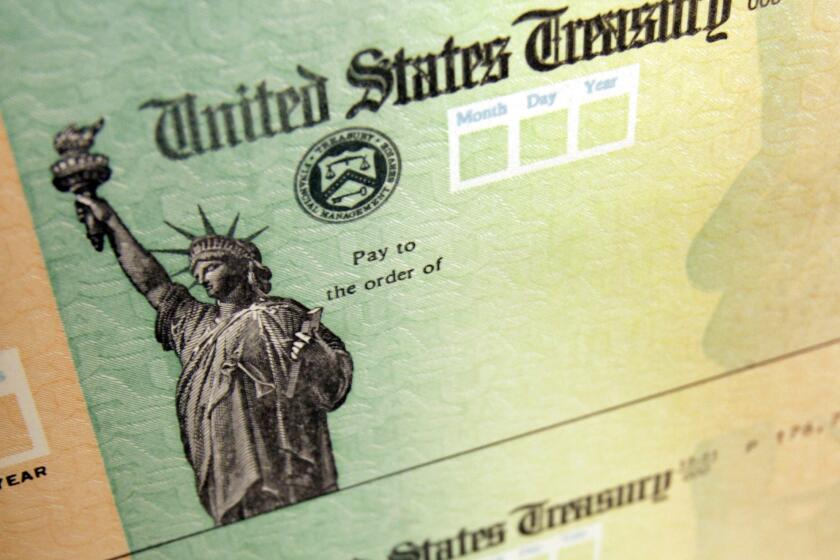Analysis: After sending many signals to Latinos in his campaign, Trump sends another: Not in my Cabinet
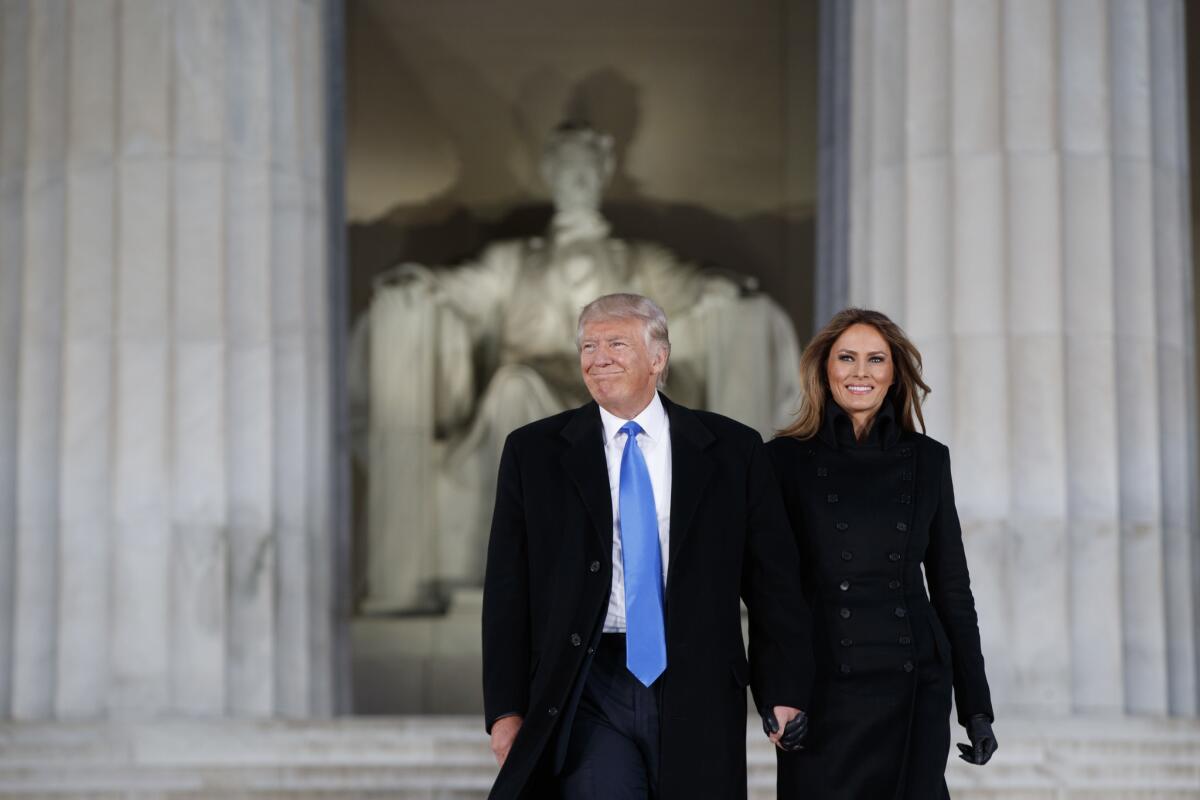
President-elect Donald Trump and his wife, Melania, as they arrived at Thursday’s inaugural concert at the Lincoln Memorial.
Reporting from Washington — Republican and Democratic presidents have long nodded to the importance of diversity as they select their Cabinets. Since 1989, every president’s first Cabinet has included at least one Latino.
Not Donald Trump’s.
After a campaign in which relations with Latinos grew painfully raw, the sort of tension that typically would make reaching out imperative, Trump selected a Cabinet that is predominantly white and male. The only members who break from that description, out of 15 positions, are an African American man, one Asian American woman and a white woman.
The absence struck many Latinos as a fresh slap after a season of insults. Trump opened his campaign by asserting that some Mexican immigrants were rapists and murderers and spent much of his time promising to deport Latinos in the country without proper papers, a group that comprises millions of people and affects millions more. He had no high-profile Latino campaign surrogates or staff members.
A spokesman for Trump urged Americans to “stay tuned” and said that Latinos would be well represented among sub-Cabinet jobs.
For now, however, in making his choices for his top advisors, Trump seemingly has hewed to the strategy of his campaign, to bolster the Americans who supported him but ignore those who did not.
Politically, that decision amounts to a lost opportunity on several fronts.
Rather than start to dig himself out of a hole with a fast-growing group whose influence is increasingly felt in swing states, Trump deepened it.
He could have, but did not, present Latinos with an inclusive version of the Republican Party, one that might begin to cut into Democratic dominance with the group.
And he will not have a truly representative group of Americans around him, in the Cabinet room or among his top advisors, when he makes decisions that affect the nation.
“You simply need to have every perspective around the table in the decisions when the federal government serves its people — that’s what this is about,” said Arturo Vargas, executive director of the National Assn. of Latino Elected and Appointed Officials. He called the Trump Cabinet a “very serious setback.”
Trump’s three Cabinet selections who are not white males rank just below George H.W. Bush’s 1989 Cabinet, which had four. The largest number was President Obama’s: 10. George W. Bush and Bill Clinton each had eight.
To many Latinos, the Cabinet selection seems to reflect what they saw in the campaign. Trump’s biggest base of support was among whites, particularly men. The large crowds that attended his rallies were almost completely white. His cultural references evoke a time when white men dominated American life to a greater extent than they do now.
His inauguration, too, harks back to that past. On Thursday, Lee Greenwood performed at the inaugural concert at the Lincoln Memorial; his song “God Bless the U.S.A.” came out in 1984 and was used that year in President Reagan’s reelection ads.
The Republican establishment has long worried about the effect of alienating the growing Latino population. Under Trump’s incoming chief of staff, Reince Priebus, the Republican National Committee in 2013 called on the party to attract more Latino voters lest it lose future elections.
But Trump has never been a part of the establishment, and the lesson of his successful campaign may well have been that deference to Latinos didn’t matter.
Sean Spicer, Trump’s spokesman, pushed back Thursday against the notion that Trump should have named a Latino to his first Cabinet.
“The No. 1 thing that I think Americans should focus on: Is he hiring the best and the brightest? Is he hiring people who are committed to enacting real change, respecting taxpayers, bringing about an agenda that will create jobs, lift up wages?” Spicer said.
He said Trump’s administration will include “diversity in gender and diversity in thinking and a diversity of ideology. So, it’s not just about, you know, skin color or ethnic heritage.”
Asked whether he meant to imply that no Latino candidate made the cut among the “best and the brightest,” Spicer sharply retorted: “That’s not what I said.”
Trump is known to have talked to Latino politicians about jobs in his administration — including former California Lt. Gov. Abel Maldonado, who was under consideration for the position of Agriculture secretary, which was given to former Georgia Gov. Sonny Perdue.
But the rub for Latinos is that the biggest jobs are now filled, pending Senate approval of Cabinet members.
Their absence from the higher reaches of the Trump administration comes at an otherwise uplifting time for Latinos, politically speaking.
In November, 34 Latinos were elected to the House, a jump of five from the previous session. Four Latinos are senators, including newcomer Catherine Cortez Masto of Nevada. Across the country, the number of Latino statewide officeholders rose from 10 to 12.
In the presidential contest, Latinos turned out in high numbers, helping to narrow Trump’s victories in states including Arizona, Texas and Georgia, and to keep Nevada and New Mexico out of his grasp. In California, Latinos were arguably responsible for the swamping size of Hillary Clinton’s victory.
Mike Madrid, a Republican political strategist in California who is Latino, said that demographic changes afoot in the Southwest and elsewhere meant that Trump and fellow Republicans needed to work harder to attract Latinos, not deliver an insult.
Republicans may hold onto their unified control of Washington over the short term, he said, but “beyond that, it is pretty grim.”
The national landscape post-2016 resembles the backlash among Latinos in California in 1994. Republican Gov. Pete Wilson’s immigration posture drove them to the Democratic Party — where they remain.
Polls taken of voters by television networks and the Associated Press on election day found that about 28% of Latinos voted for Trump, slightly more than the share won by Republican nominee Mitt Romney in 2012.
But other analysts, examining returns precinct by precinct, say Trump did worse than the exit poll indicated. Trump’s percentage was less than 20% nationally and as low as 11% in California, according to a study by UC Riverside political scientist Francisco I. Pedraza and UCLA doctoral student Bryan Wilcox-Archuleta.
“Symbolism matters in politics, and symbolism matters in government,” Madrid said. “With Latinos mobilizing, we are now cementing the political opinions for the next generation.”
Madrid did not rule out the possibility that Trump could improve his standing among Latinos, but in order to do so he would have to change his inclinations, he said.
“The bar is very low” for Trump among Latinos, he said. “The question is, do they see that as a problem to be solved? I don’t think they do.”
Twitter: @cathleendecker
ALSO:
Donald Trump’s transition has hurt his popularity, not helped
Updates on California politics
Live coverage of the Trump transition
More to Read
Get the L.A. Times Politics newsletter
Deeply reported insights into legislation, politics and policy from Sacramento, Washington and beyond. In your inbox three times per week.
You may occasionally receive promotional content from the Los Angeles Times.
